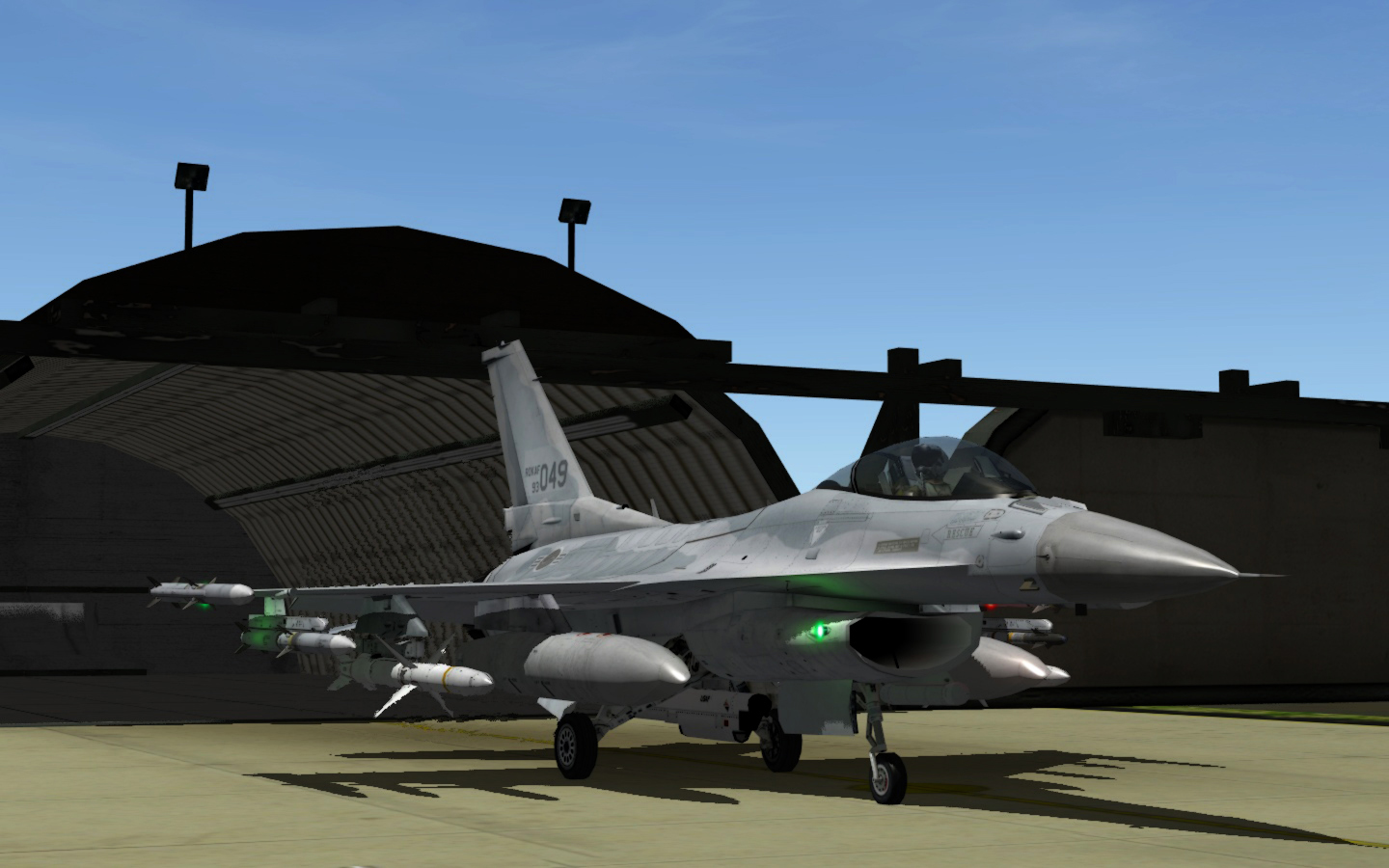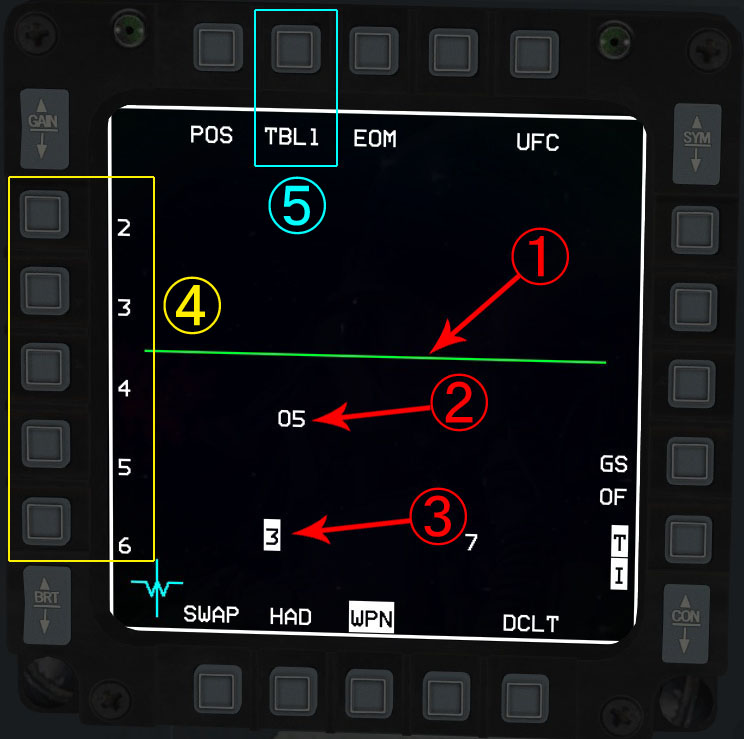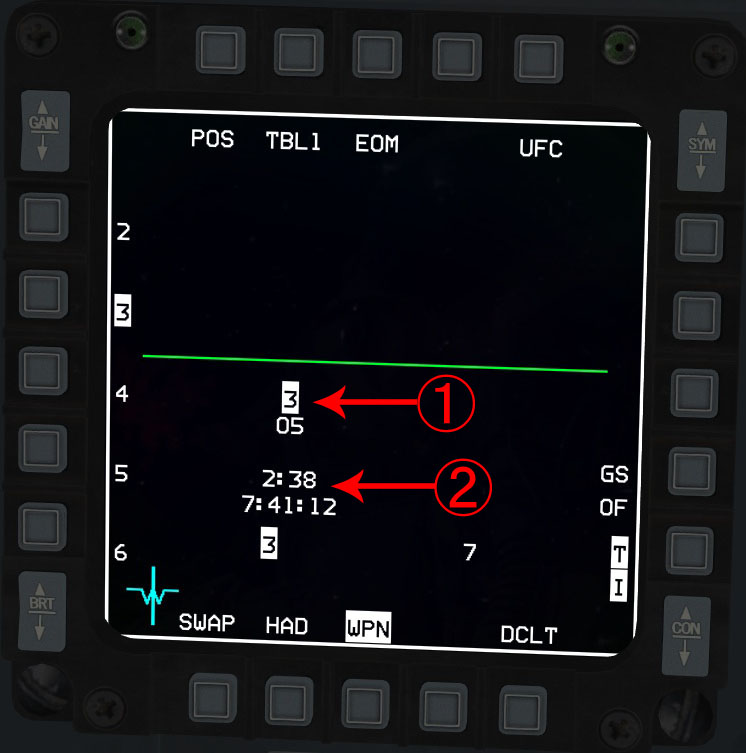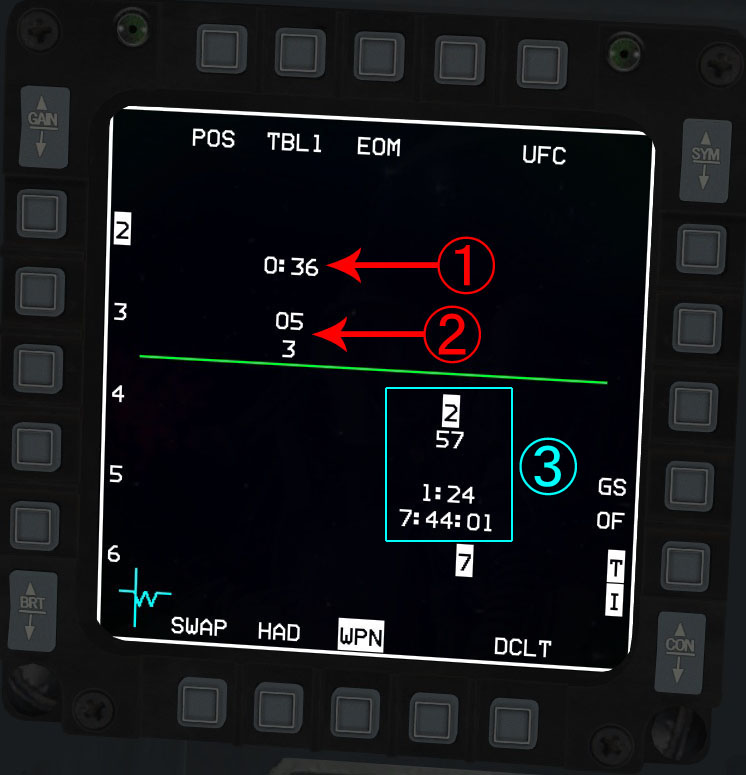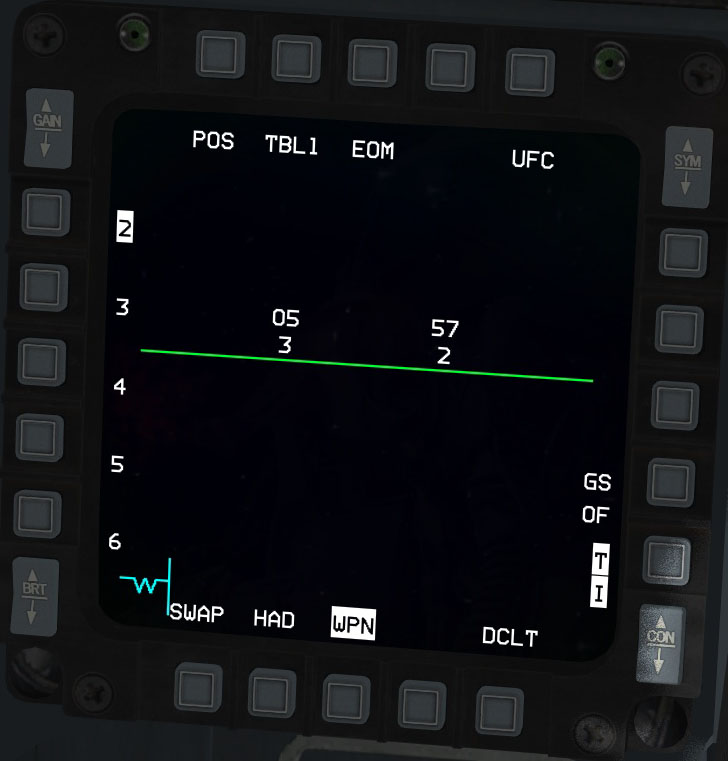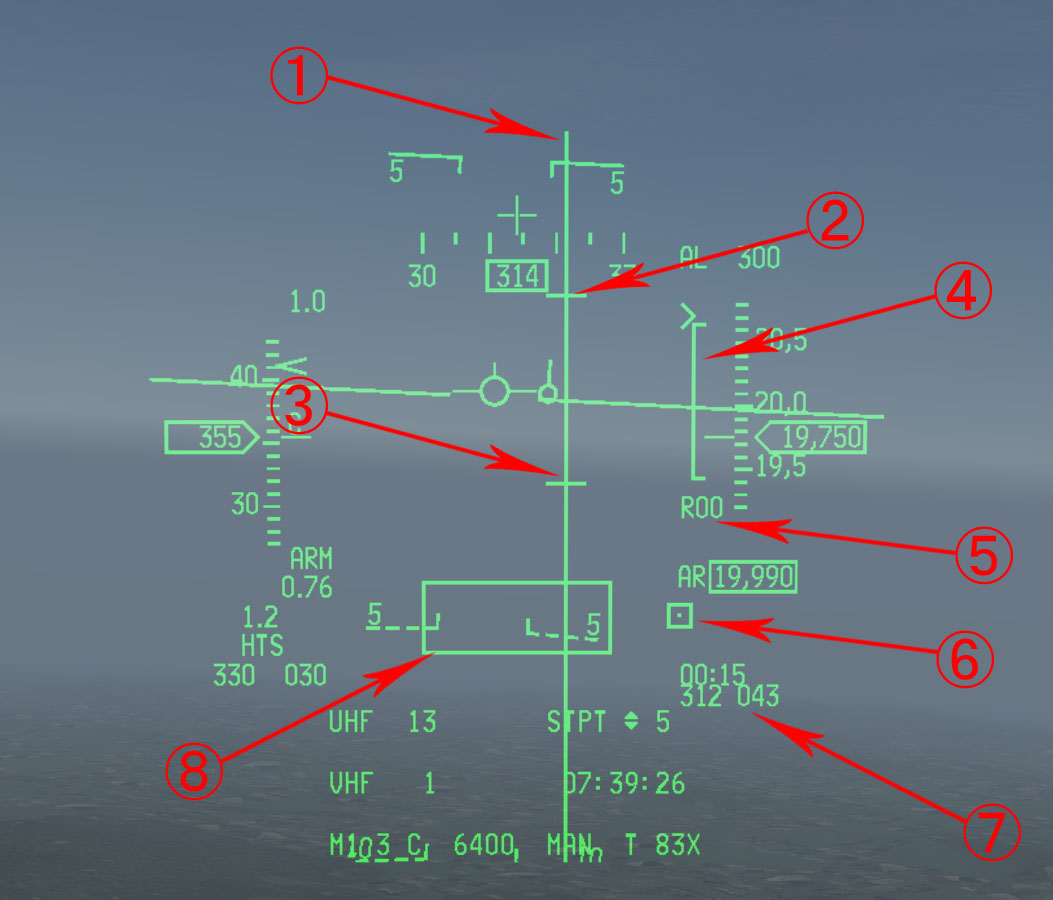POS EOM
Contents
Overview
EOM (Equations of Motion) is the default and primary POS (Position Known) mode. After launch it will fly towards the currently selected STPT. Approximately 5nm from the target, the HARM seeker will activate and search the area around that STPT coordinates for whatever threat has been handed off to it via the POS EOM page. If the threat is detected the HARM will lock onto and destroy it. If no threat is detected, the missile will impact the STPT coordinates. For high accuracy set the GPS coordinates of the SAM's fire control radar as the target STPT and the missile will in many cases destroy the radar even if it never goes active. Like all HARM modes, the HARMs must be powered ON via the A-G SMS page. The HTS pod is not required. HOTAS Note: Pressing the Cursor/Enable Switch will toggle between POS EOM and HAS modes.
- Advantages of POS EOM
- Location and threat specific for maximum accuracy
- Narrow seeker FOV for precision
- Capable of complete HOTAS control
- Disadvantages of POS EOM
- Cannot tell threat status (active, inactive, tracking/firing)
- Narrow seeker FOV may be detrimental if target is a distance away from a STPT
EOM Page: Definitions
- 1
- Launch Status Divider Line (LSDL). When a threat is handed off pre-launch, info is below LSDL. After launch the info is moved above the LSDL.
- 2
- Currently selected STPT
- 3
- HARM Station numbers (STA3 currently selected).
- 4
- Currently selected Threat Table. Threats can be selected either by pressing the corresponding OSB or by pressing TMS-Right.
- 5
- Threat Table. Can cycle through the 4 tables either by pressing OSB#2 or by pressing TMS-Left.
Pre-Launch
When a target is handed off to the HARM by either pressing the corresponding OSB or by pressing TMS-Right, the following information is displayed:
- 1
- Currently selected threat and STPT (SA-3 at STPT5 in this example)
- 2
- Time of Flight (TOF)--in this case 2 minutes 38 seconds--and Time on Target (TOT). Actual TOF and TOT can be up to 10 seconds later than displayed values.
Post-Launch
After launch the pre-launch information changes and is moved above the LSDL.
- 1
- Time Until Impact (TUI). TUI may be 10 seconds later than displayed. After impact TUI will read 00:00 for a few seconds before disappearing.
- 2
- Threat and STPT
- 3
- Here you can see that I have already handed off a second target, an SA-2 at STPT57 (a pre-planned threat ring selected by setting HSD SOI and TMS-Up on the threat ring).
HUD Symbology
- 1
- Azimuth Steering Line (ASL). Indicates direction to target.
- 2
- Max Pull-up Cue. Indicates the maximum aircraft climb/descent angle from which the HARM will be able to make the required pull-down to the target.
- 3
- Min Pull-up Cue. Indicates the minimum aircraft climb/descent angle from which the HARM will be able to make the required pull-up in its flight profile.
- 4
- HARM Launch Scale (HLS) indicates range.
- 5
- Direction to target in R (right) or L (left) in tens of degrees. For example, R02 means you must turn the aircraft 20 degrees right to line up with the target.
- 6
- Target Designator (TD) box
- 7
- Time to Release (time in range; 15 seconds in this example) and bearing/distance to target (312° 43nm; not always accurate). When in range the Time to Release will no longer be displayed.
- 8
- HARM seeker FOV; will flash when target is in range.
Designating a Target
Designating a target is done simply by selecting the target STPT as you normally would from the ICP, and calling up the POS EOM page. From there hand off a target by selecting a threat from the Threat Table. When in range, maneuver the FPM (Flight Path Marker) of the HUD on the ASL and within the limits of the Max/Min Pull-up Cues and fire.

